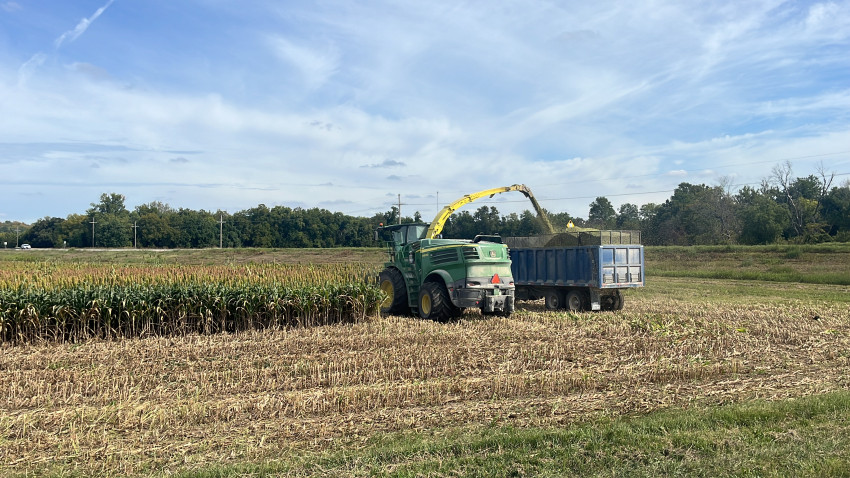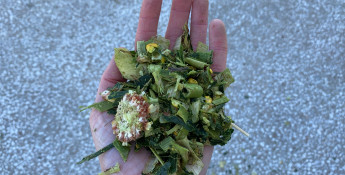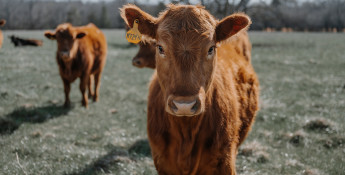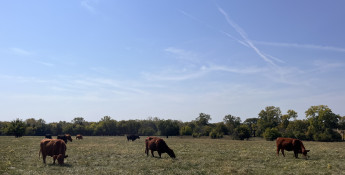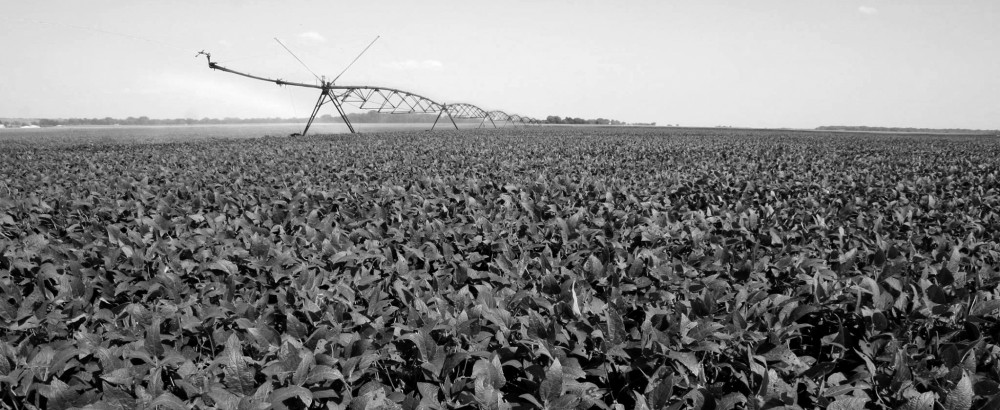By Brandi Buzzard on March 25, 2025
Spring Ranch Planning: Making the Switch to Corn Silage for Better Weed Control
Crop Rotation, Cow Feed and the Dadgum Johnsongrass
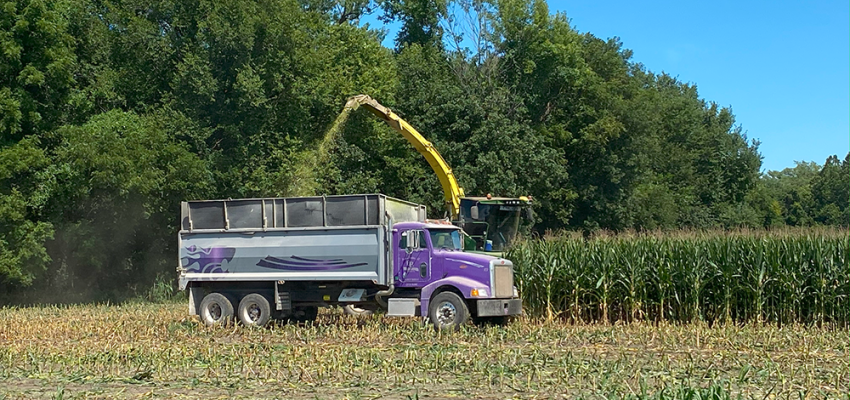
I don’t want to jinx anything, but I think it’s safe to say spring is here; I’m so confident I even washed my winter work pants and packed them away for the season. Completing that task before April is usually a harbinger for a late March blizzard but I feel confident enough from seeing the green shoots poking up in our pasture to say, “spring is here!”
Alongside normal spring tasks on the ranch, such as weaning the fall-born calves and pregnancy checking the cows for fall 2025 calving season, we are also continually planning, preparing and growing food for the cows. There are basically two kinds of feed our cows get – grass pasture and harvested feeds. Grass pasture is exactly what it sounds like: turning the cows out on pastures for several months to graze on fescue and native prairie grasses.
The other kind – harvested feeds – is relatively all-encompassing. Supplemental grain, soybean meal for added protein, hay bales (also called harvested forage) and silage are all feeds that require additional labor beyond grazing to provide nutrition to our cows. We are big fans of silage and have been feeding it for five or so years.
Silage is forage that has been preserved by fermentation and is most commonly made using corn, sorghum or other cereal grains to be fed to cattle, sheep and other ruminants. The past two years we have planted sorghum for silage and have really loved it. Forage sorghum is drought resilient and costs less to plant than corn due to the seed being cheaper and there is generally no need for irrigation. However, over the past two years, the Johnsongrass (a perennial grass we consider a weed) in our fields has gotten to the point of demanding attention. We cannot spray Johnsongrass with herbicide while growing forage sorghum because Johnsongrass is also a member of the sorghum family – if we sprayed the field to kill the Johnsongrass, we’d also kill the sorghum. Counterproductive, to say the least.
Therefore, this year we are planting Roundup Ready® corn, a variety of seed corn that is resistant to the herbicide Roundup. The justification for changing our planting strategy lies in the ability to spray the corn fields to get rid of Johnsongrass and other weeds but preserve the corn for chopping silage in late summer.
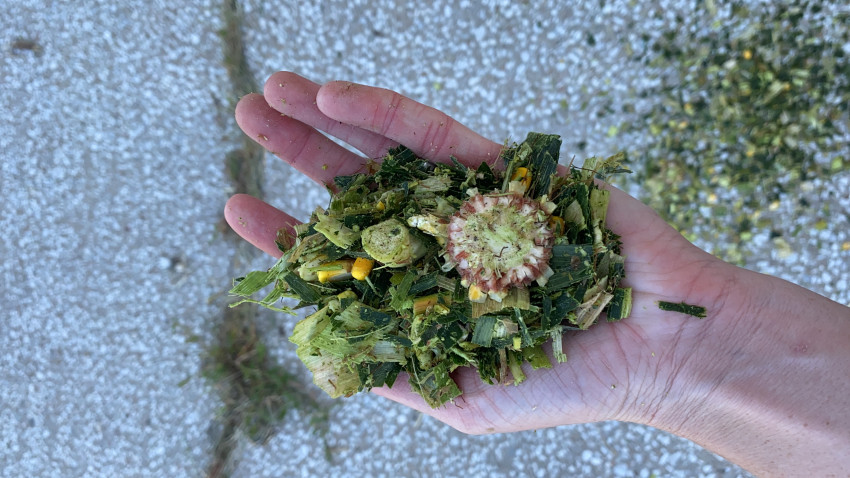 There are definite benefits to corn silage, so this decision is not a setback or a significant detriment. While corn is not as drought resistant as sorghum, it does contain more energy and yields more feed than sorghum. As with many decisions on the ranch, there are not black and white solutions to complex issues. We operate with nuance and prepare ourselves with as much data and insight as we can prior to making decisions.
There are definite benefits to corn silage, so this decision is not a setback or a significant detriment. While corn is not as drought resistant as sorghum, it does contain more energy and yields more feed than sorghum. As with many decisions on the ranch, there are not black and white solutions to complex issues. We operate with nuance and prepare ourselves with as much data and insight as we can prior to making decisions.
Furthermore, crop rotation has many positive side effects such as reducing soil erosion, improving nutrient cycling and improving biodiversity in the soil. After this year, we may return to forage sorghum for our fields. It will depend on a variety of factors including seed costs, land availability, nutrition needs and, yes, the dadgum Johnsongrass. We may also consider a cover crop such as rye, which we have planted in the past and chopped for ryelage.
 The cows honestly don’t care which crop we plant – both corn and sorghum silage are palatable and provide our herd with the nutrition needed to keep them well-fed. They see the tractor and feed wagon in the distance and come a runnin’!
The cows honestly don’t care which crop we plant – both corn and sorghum silage are palatable and provide our herd with the nutrition needed to keep them well-fed. They see the tractor and feed wagon in the distance and come a runnin’!

